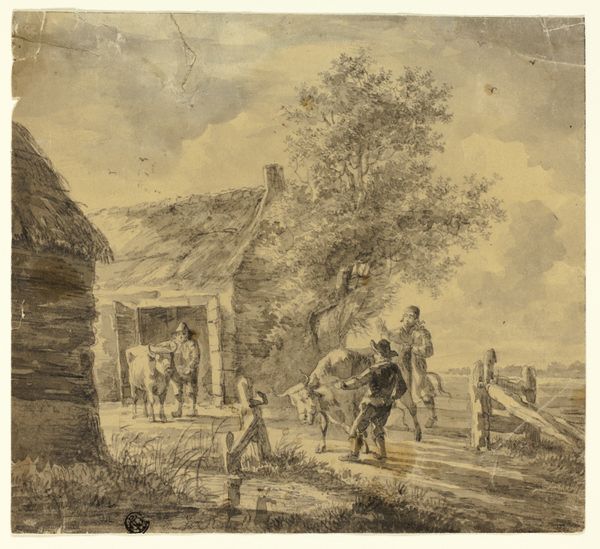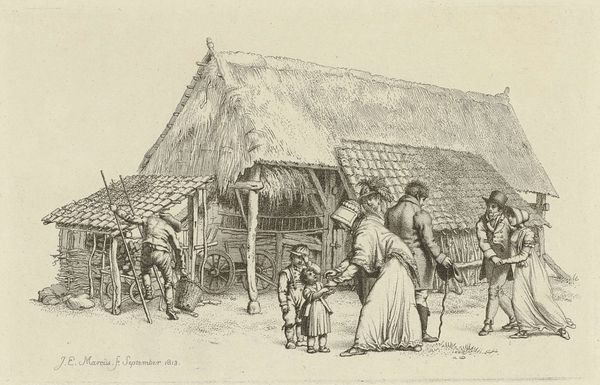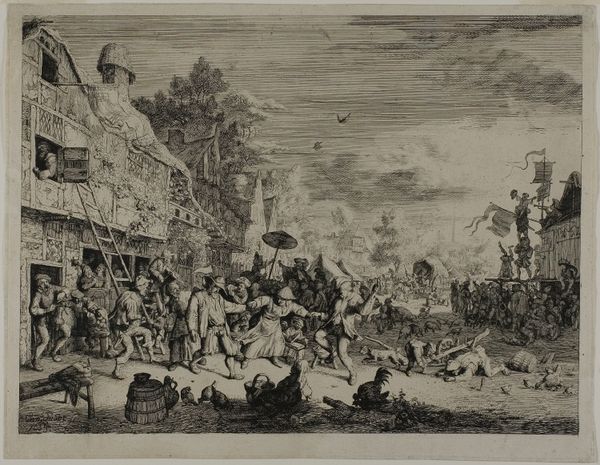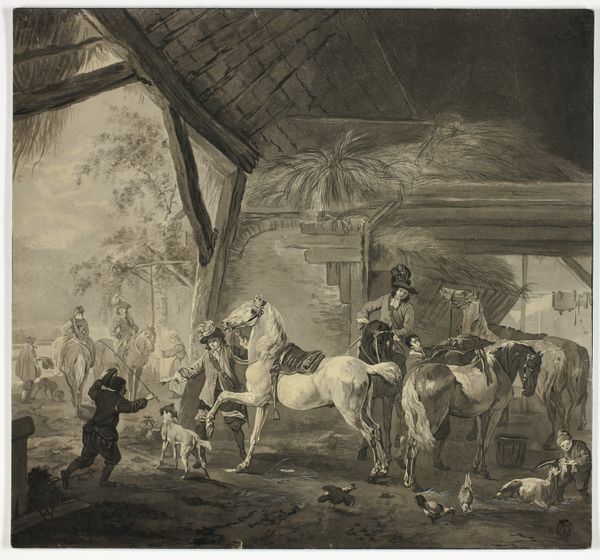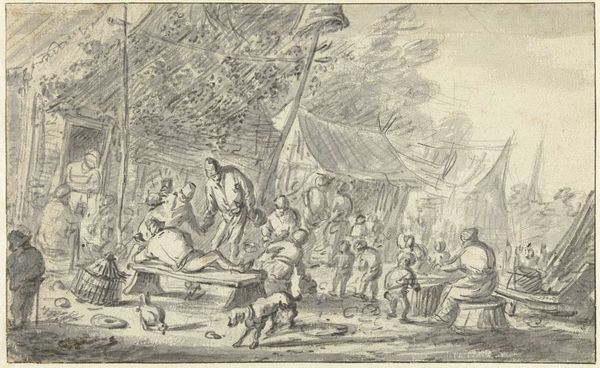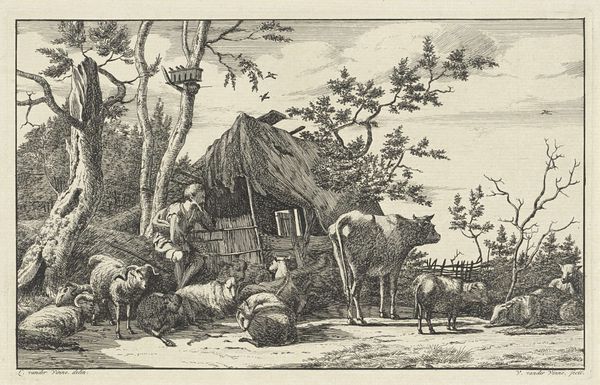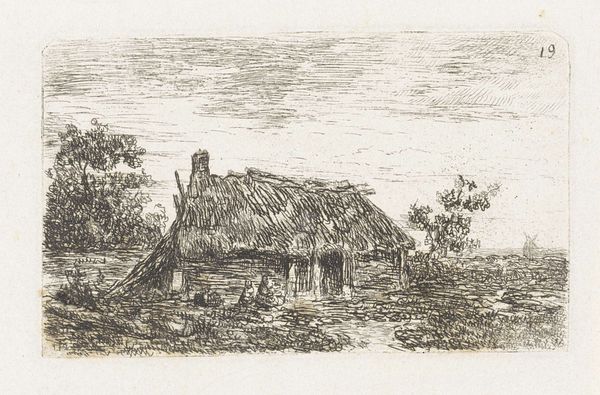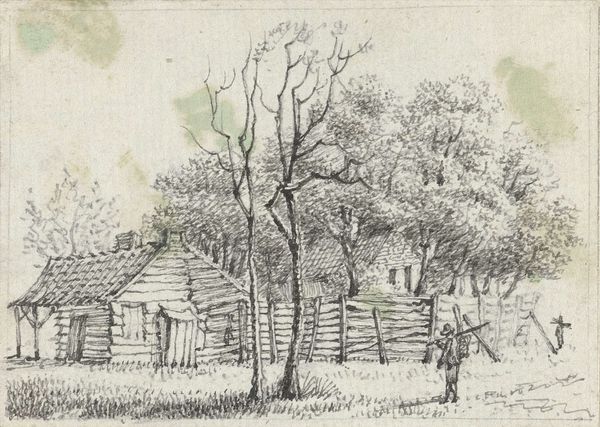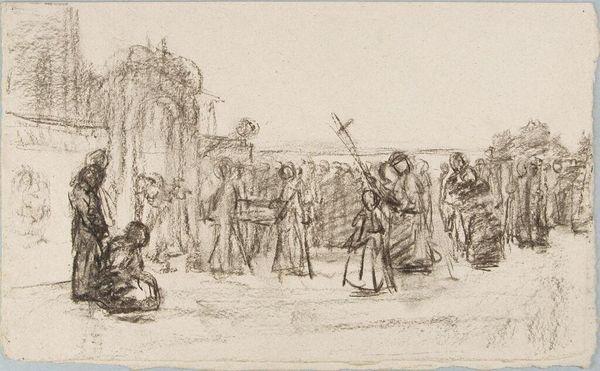
mixed-media
#
portrait
#
african-art
#
mixed-media
#
narrative-art
#
landscape
#
coloured pencil
#
genre-painting
#
mixed media
#
miniature
#
realism
Dimensions: height 61 cm, width 69.8 cm, depth 17.1 cm, depth 21.3 cm, height 50.5 cm, width 59.4 cm
Copyright: Rijks Museum: Open Domain
This diorama of a dance celebration on a plantation was created by Gerrit Schouten in the late 18th or early 19th century. Schouten, born in Suriname to Dutch parents, was known for his depictions of the colony’s landscape and people. This artwork offers a glimpse into the lives of enslaved people on a plantation. It invites us to consider the intersection of race, class, and cultural expression under the oppressive conditions of slavery. The figures, caught in a moment of communal dance and music, offer a counternarrative to the dehumanizing institution of slavery. Schouten, as a member of the colonial elite, had a particular perspective, yet the diorama suggests an effort to document and perhaps appreciate the cultural practices of the enslaved. It serves as a poignant reminder of the human spirit's resilience, as individuals sought solace and solidarity through dance and music, even in the face of immense hardship.
Comments
rijksmuseum about 2 years ago
⋮
In the tent we see a du, a type of role play with music and dance that was held on plantations. Both the performers and the audience were people held in slavery. The lead role was reserved for the afrankeri, the narrator (the woman on the far left). The man in the red outfit on the right represents the colonial authority. During the du, the enslaved people could vent criticism of this authority in their own language, Sranan tongo.
Join the conversation
Join millions of artists and users on Artera today and experience the ultimate creative platform.
